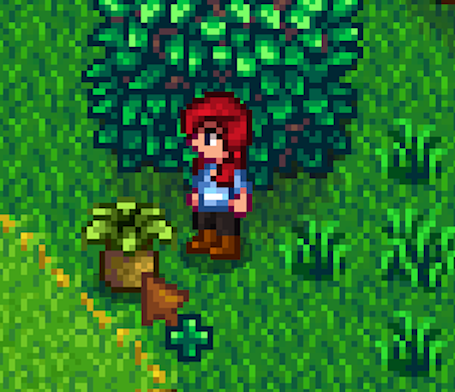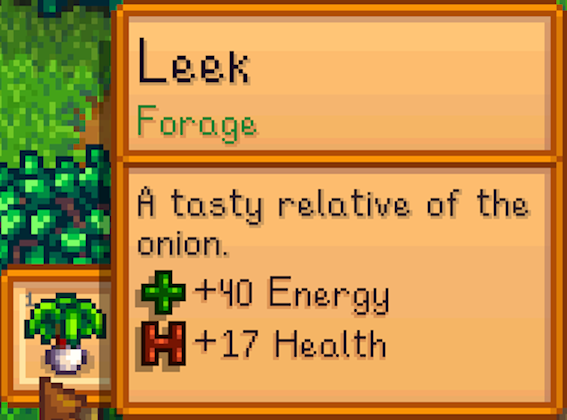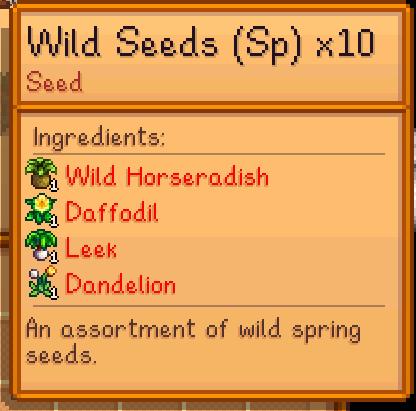One of the reasons that Stardew Valley is so endlessly replayable is that each element has many different uses, so I don’t get bored using the same thing over and over. This multi-use philosophy applies to the maps, the tools, the villagers, and many other elements, but I want to focus on Forage.

Forage are plants that grow wild and can be found and collected just by walking around. Crops require costly seeds, and must be watered each day, expending the farmer’s limited energy. Forage requires neither money nor Energy.
But once I collect some forage, what do I do with it? Many things, and they are all important!

Forage can be sold for Gold. Forage requires no upfront investment of Gold, unlike Crops, so this is basically free money! Early on the farmer has little money and needs many expensive upgrades, like more inventory space, or farm buildings like a barn or upgraded house with a kitchen.

Most Forage can be eaten to restore Health and Energy. (Some forage is poisonous, so read the tooltip carefully before chowing down!) Forage requires no energy to collect, unlike Fish or Crops, so again, it’s basically free Energy! Before the Farmer gets rolling with upgrades, it’s easy to run out of energy and be unable to complete the day’s chores and errands. Eating is doubly beneficial in the Mines, because it restores Energy spent mining as well as Health lost fighting monsters.

Forage, like almost every item, can be given to villagers as a gift. Gifts improve the ViIlager’s relationship with the farmer, which can have mechanical benefits as well as the intrinsic benefit of being kind and making friends. Different villagers have different opinions of different Forage, so I watch their reactions closely (or read the wiki) to match the villager with the ideal gift.

Forage can be turned into more Forage! I can turn a set of four Forage into a packet of ten seeds. The seeds take a week to grow and require watering, but if I can spare the time and energy, I get 250% of what you put it! The resulting Forage can be turned into more seeds, so each week my garden can expand dramatically.
So even with this free resource that I collect just by walking around, there are many factors to consider. In-game days, daily energy limits, Villager preferences, cash flow, my short-term and long-terms goals all collide in the simple question of “What should I do with this thing I found on the ground?”
But Stardew Valley isn’t content to have a few densely-useful items. It has hundreds of densely-useful items! Similar decisions can be made about the 30+ villagers, dozens of fish, scores of crops, 90+ artifacts, ores, gems, recipes, the list seems endless. Combining such breadth and depth in the same game is truly impressive!